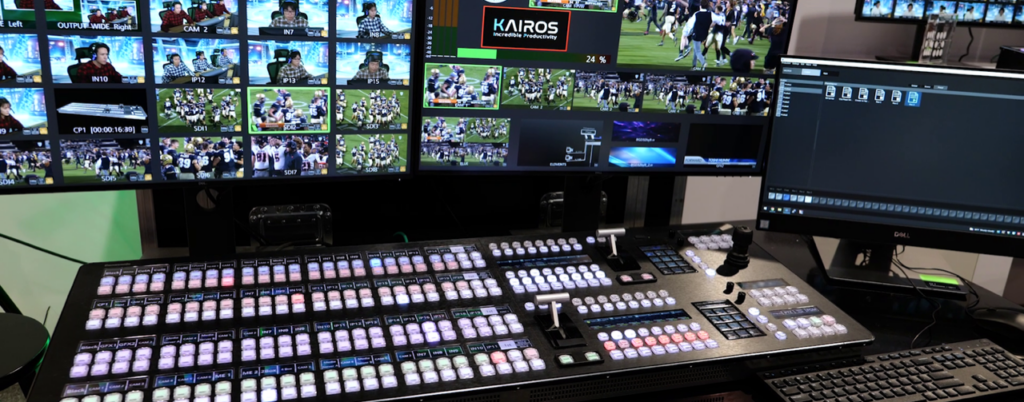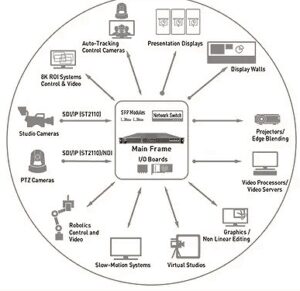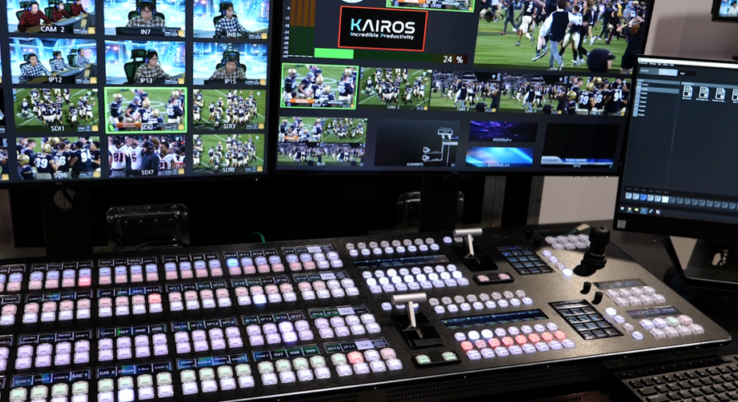The Panasonic Connect KAIROS IP Platform is Becoming a Centralized Toolbox for Every Video Production
By Jennifer P

In a recent article written by Broadcast Beat, Frank Beacham spoke with Michael Bergeron, who is currently managing Panasonic Connect’s broadcast studio systems business, and is focused on KAIROS IT/IP live production. With the addition of two new Core mainframes and software upgrades, Panasonic Connect has increased the scalability of its KAIROS platform to enable bigger and more intricate video projects.
Production teams must now produce more dynamic content that can deliver large amounts of high-quality video and graphics to several screens due to the development of streaming processes. However, there are substantial differences in the precise scale, price, and production needs.
The Panasonic Connect KAIROS platform scales to accommodate the demands of any manufacturing, with a minimal configuration costing roughly $30,000. One of the new items is the KC2000 Core, which promises a 200 percent increase in input and output capacity as well as more powerful video processing and a significantly bigger internal clip player (900 GB). The KC200, a scaled-down Core unit, is additionally offered.
When linked to two 100Gb ST 2110 networks, both of the new Cores can offer SMPTE 2022-7 network redundancy. The KC200 and KC2000 4RU Chassis provide much lower audible noise levels suitable for operation in a remote venue or studio rack.

The broadcast studio systems division of Panasonic Connect is now under the direction of Michael Bergeron. The KAIROS IT/IP based live production platform is his current area of interest.
Frank Beacham of Broadcast Beat chatted with Bergeron.
Frank Beacham: Panasonic has expanded the KAIROs system. Could you give us a layman’s overview of what the KAIROS system is and what it does?
Michael Bergeron: In many ways, KAIROS is like a switcher. But it’s more general purpose than that…it’s also a video processor. It has an open-ended amount of output that’s based on total pixels. We can create content on it using video, video sources, graphic sources…any kind of any kind of format, and then mash those together into layers — sort of like Photoshop — and then create outputs for various screens.
People are using more LED walls, rear screen projectors, lobby monitors and other video displays…it’s perfect for use in public spaces with lots of displays. It’s also excellent for broadcasts or webcasts.
Frank Beacham: Can all of this content be mixed, produced and fed simultaneously to different platforms such as display screens, webcasts and broadcasts?
Michael Bergeron: Yes, it can all be done simultaneously. There are two ways to approach the user interface. One looks like a switcher panel that can be set up for anyone to operate. Also, there is the GUI interface. Things can be layered there…like you are using After Effects.
Mac or Windows displays can be used as our assignable player. Every control can be assigned to do a different task. Our Creator Software is where you do the creative set-ups. Once you’ve set-up your show, then it can be controlled from a either a complex or a very simple panel.
KAIROS has both a built-in IP switcher and IP routing. The system is basically a central computer that can do any kind of production and send it anywhere at any frame rate or any resolution.
We went from SD to HD, HD to 4K. I remember there was a lot of talk about what’s the next format going to be…will it be 8K? I said that the next format is going to be no format at all because we are not tied to formats anymore. When people are producing content for large screen projects, projection mapping or massive LED walls, they don’t really think in terms of format anymore.

Yes, there are limitations to what fits a particular output, but other than those constraints, we can we can build whatever we want.
Frank Beacham: KAIROS natively supports SMPTE ST 2110 IP connectivity…including some Panasonic cameras. I know that combines the scalability of IP with SDI. Why is that standard important to this system?
Michael Bergeron: SMPTE 2110 is really a combination of low latency — meaning no delay of SDI — and multipoint. You can send any uncompressed source that comes into a 2110 network to any other source as long as you just assign it to what IP address it’s going to on a network. It replaces SDI routing and is far more flexible.
If I plug a 2110-compatible camera into the network, it can be seen as an input. If I want to record it, I just have that IP route it to the recorder. We also still work with SDI and HDMI equipment or a combination of all of them. The system basically adapts to whatever equipment you might have.
I can program presets into macros on my control surface. I can hit a button that calls up any camera and sends the signal to a preset location and changes the background to something else. I can operate the movement of a robotic camera. This system is very flexible.
Read the full interview from Broadcast Beat HERE
Learn more about Panasonic Connect HERE

